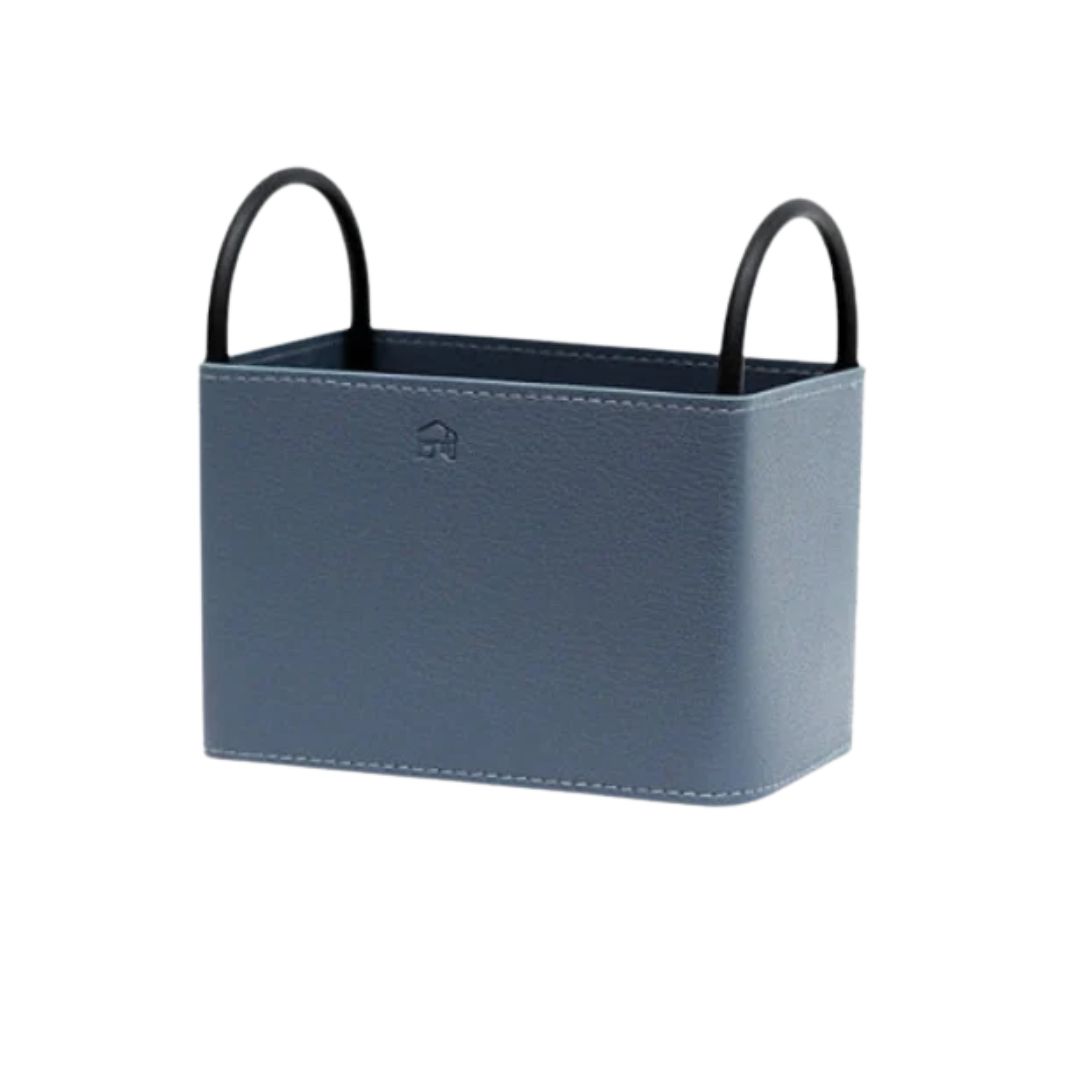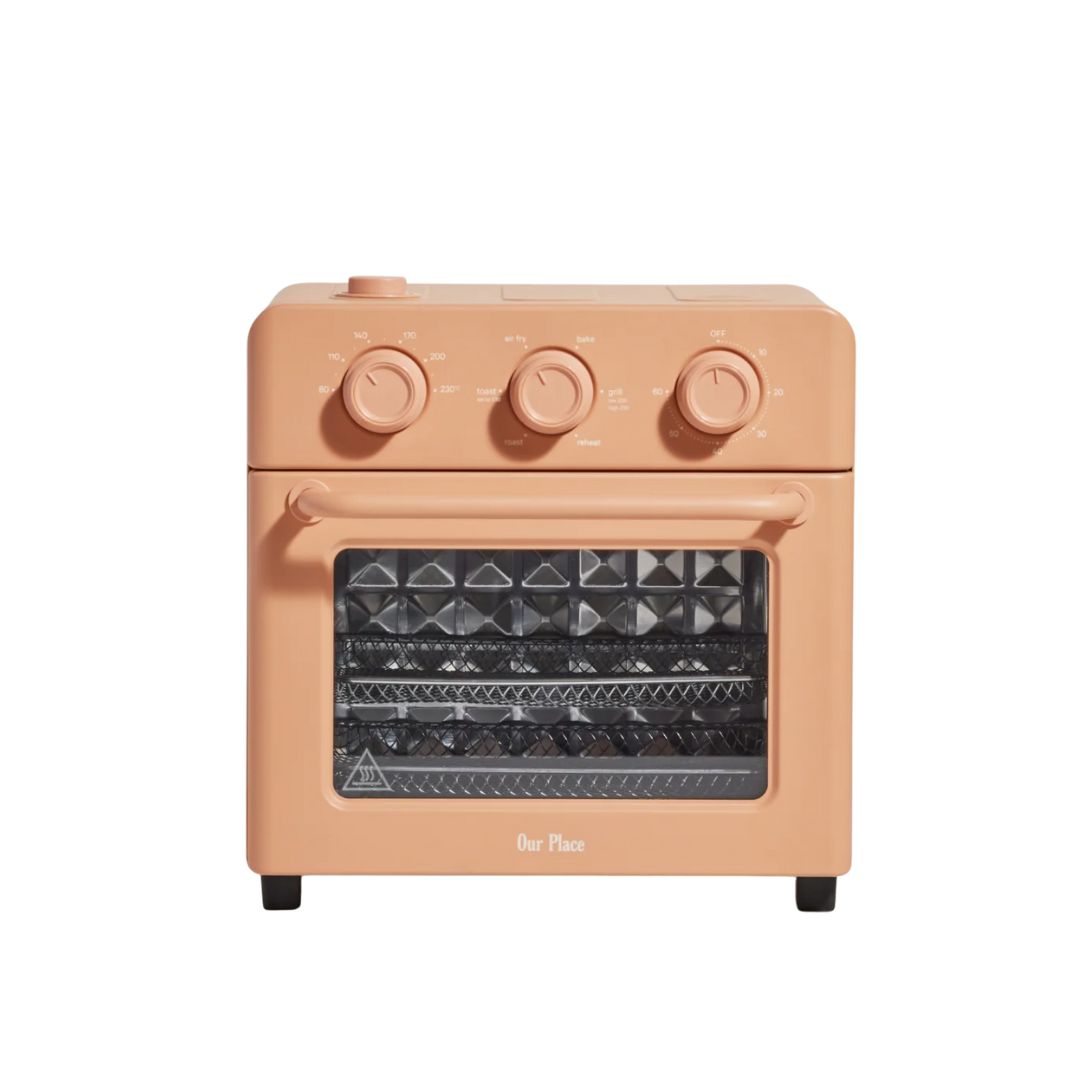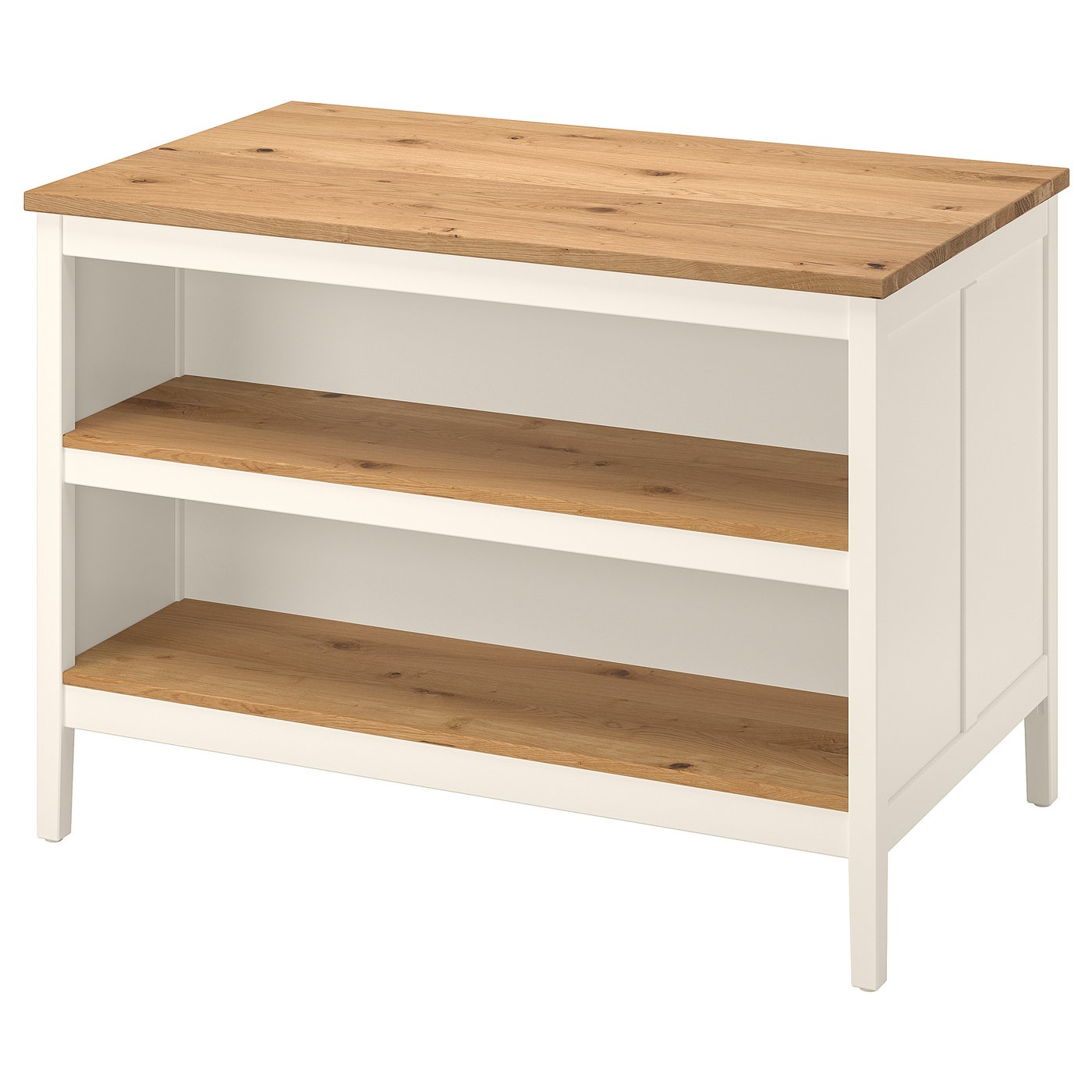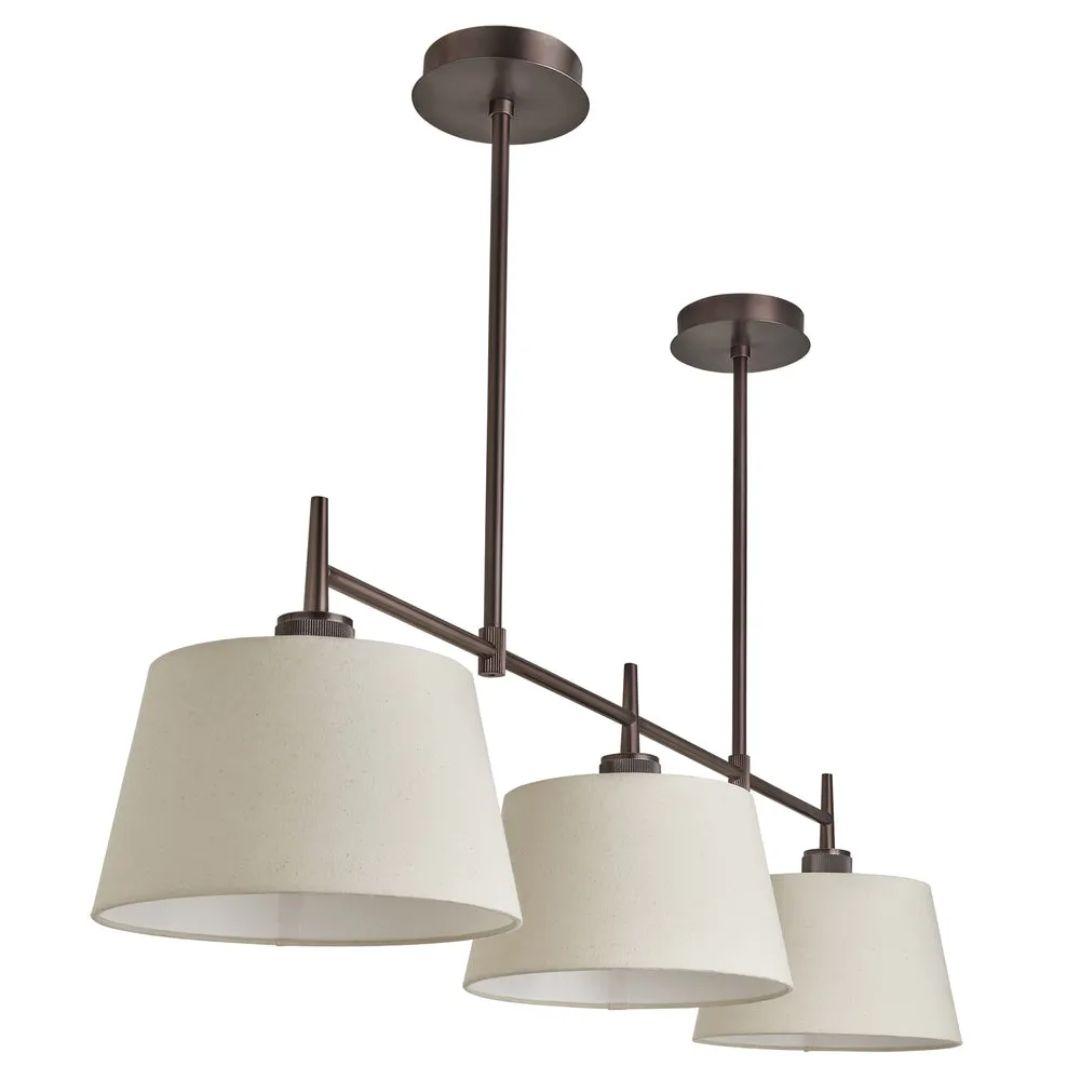I Looked Inside 9 Real Chefs' Home Kitchens to Find the Key Ingredients for a Restaurant-Worthy Cooking Space at Home
Top chefs reveal the ultimate recipe for planning a kitchen fit for a pro. Ready, steady, cook!
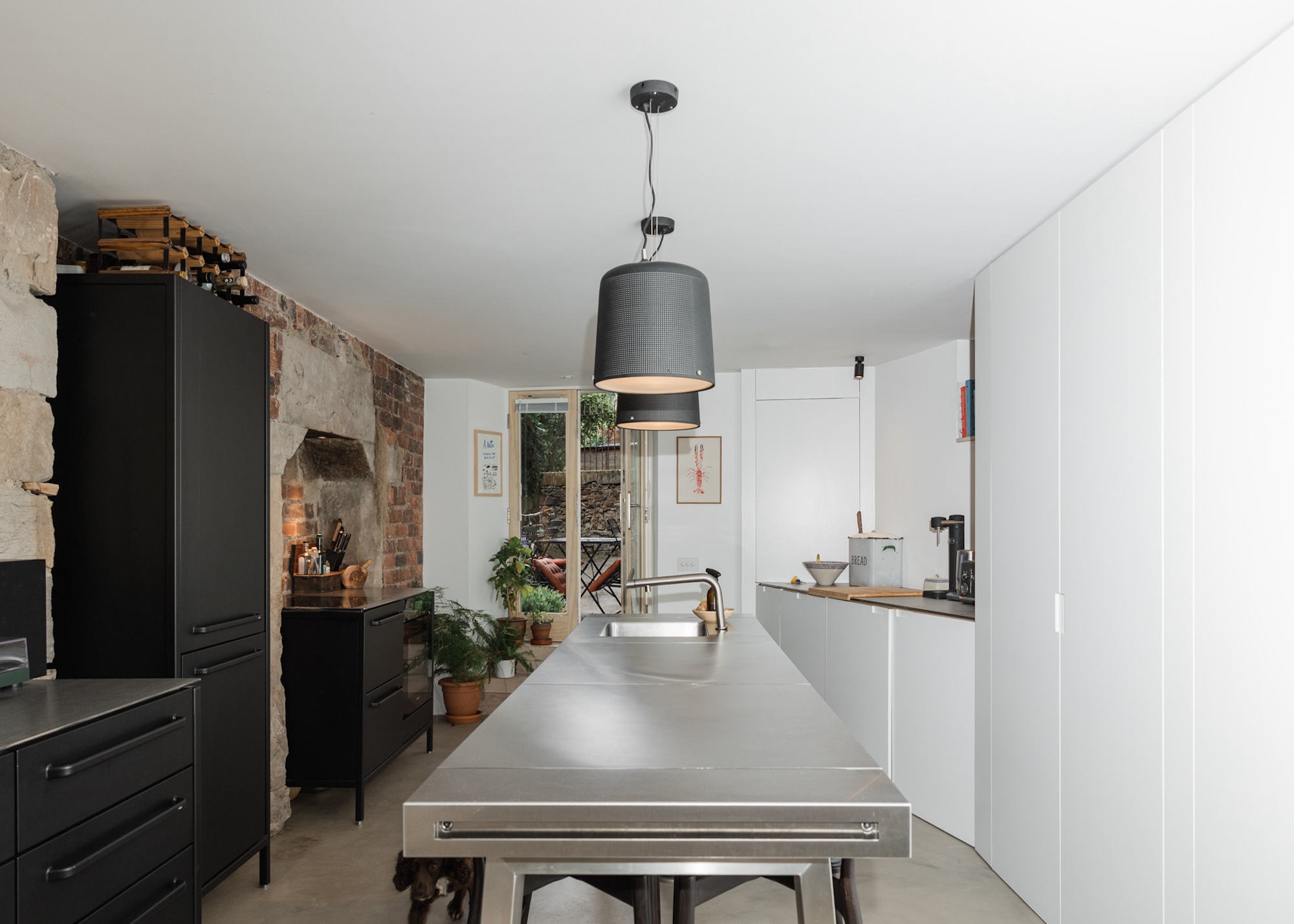
We all spend a lot of time in our kitchens — it’s the heart of the home. But not as much as professional chefs who devote hours and hours of the day and night slicing, searing, and sautéing in their workplace kitchens.
So, when it comes to designing modern kitchen ideas, we reckon the best people to show us how a top-notch kitchen should function are the cooking pros. Whether you’re a keen cook or a budding gastronome, the rules are the same, say the experts. You need an efficient kitchen layout, appliances to suit your space and cooking habits, and Michelin-star storage to keep surfaces clutter-free. You’ll also want robust and easy-to-clean countertops that will stay looking gorgeous for years. And personal touches are a must — after all, this is your home for friends and family to enjoy, not a bustling workplace to plate up cover after cover.
So how do you plan a kitchen remodel that performs like a pro but still feels like home? “My home kitchen is deeply inspired by my time in professional kitchens, but softened with layers of style and comfort,” explains British Vietnamese chef and cookbook writer Thuy Diem Pham. “I didn’t want it to feel cold or industrial, yet I brought in a few key elements from the professional world that make cooking feel both effortless and enjoyable.”
Get ready to sharpen your culinary skills and learn from the best. Here are nine chef kitchen designs you'll want in your home.
1. Space Planning Is Key
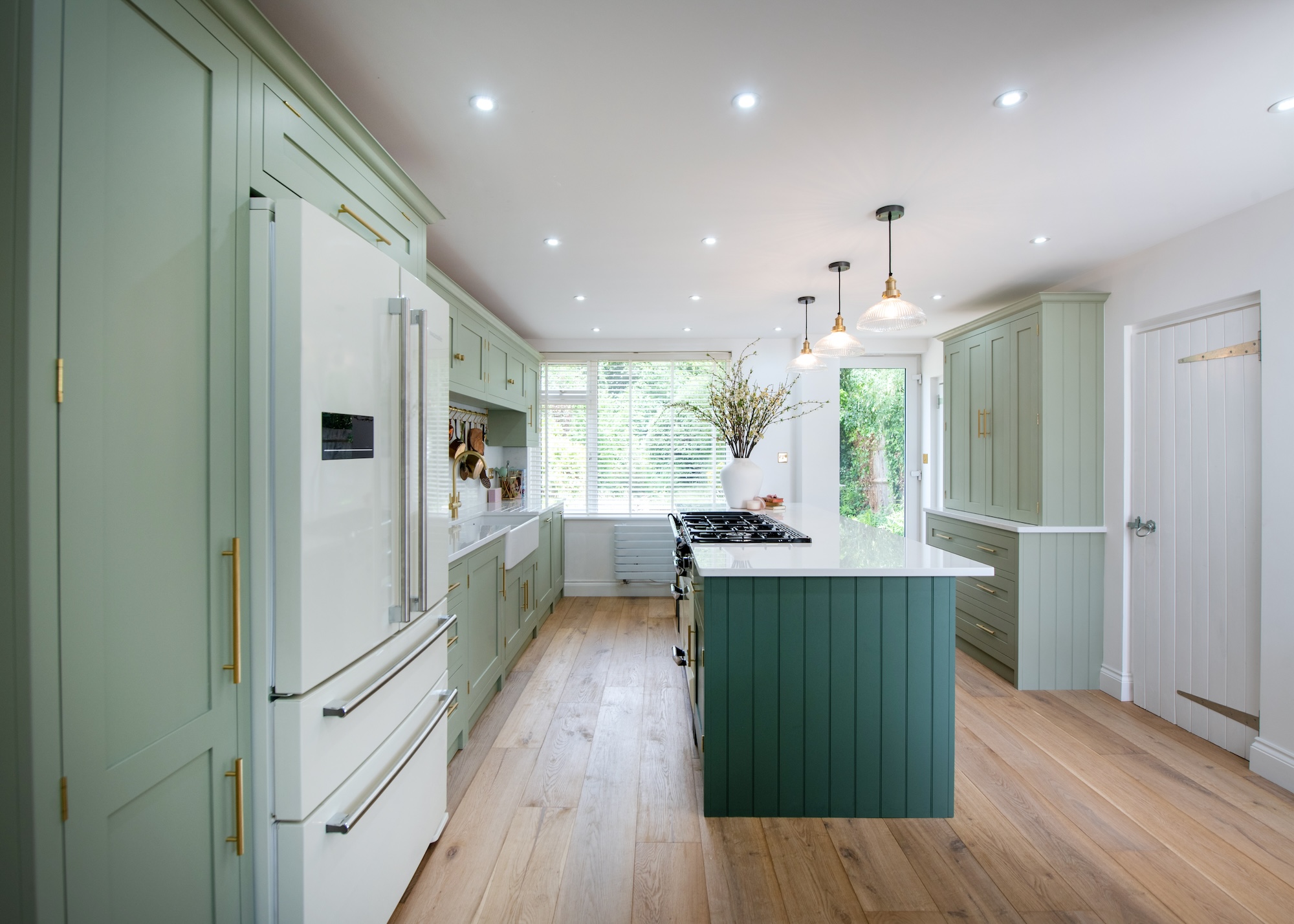
Before you get down to the business of monster ovens, pro-style kitchen taps, and slick surfaces, you’ll need to look at the flow of your kitchen space.
“Professional kitchens are designed to accommodate multiple people moving seamlessly through different zones, and your home kitchen should do the same,” says Charmaine White, associate director of interior design at HollandGreen. “Clear walkways, thoughtful storage, and strategic placement of appliances all contribute to a space that feels effortless to use.”
In her family-focused kitchen, chef Thuy Diem Pham chose a spacious, open-plan layout with uninterrupted work surfaces and clearly defined zones for prepping, cooking, and washing up.
The Livingetc newsletters are your inside source for what’s shaping interiors now - and what’s next. Discover trend forecasts, smart style ideas, and curated shopping inspiration that brings design to life. Subscribe today and stay ahead of the curve.
“In restaurants, that kind of structure is second nature, and at home, it helps everything run smoothly, especially when I’m cooking with my four-year-old son or entertaining friends and family,” says Thuy.
Key to the space is the central kitchen island, which houses a large range cooker - combining professional performance with social cooking at home. “By positioning the cooker centre stage, I’ve created a focal point that organises circulation, prep zones, and seating around it. The island layout means everyone can gather round, turning every meal into a shared experience,” she adds.
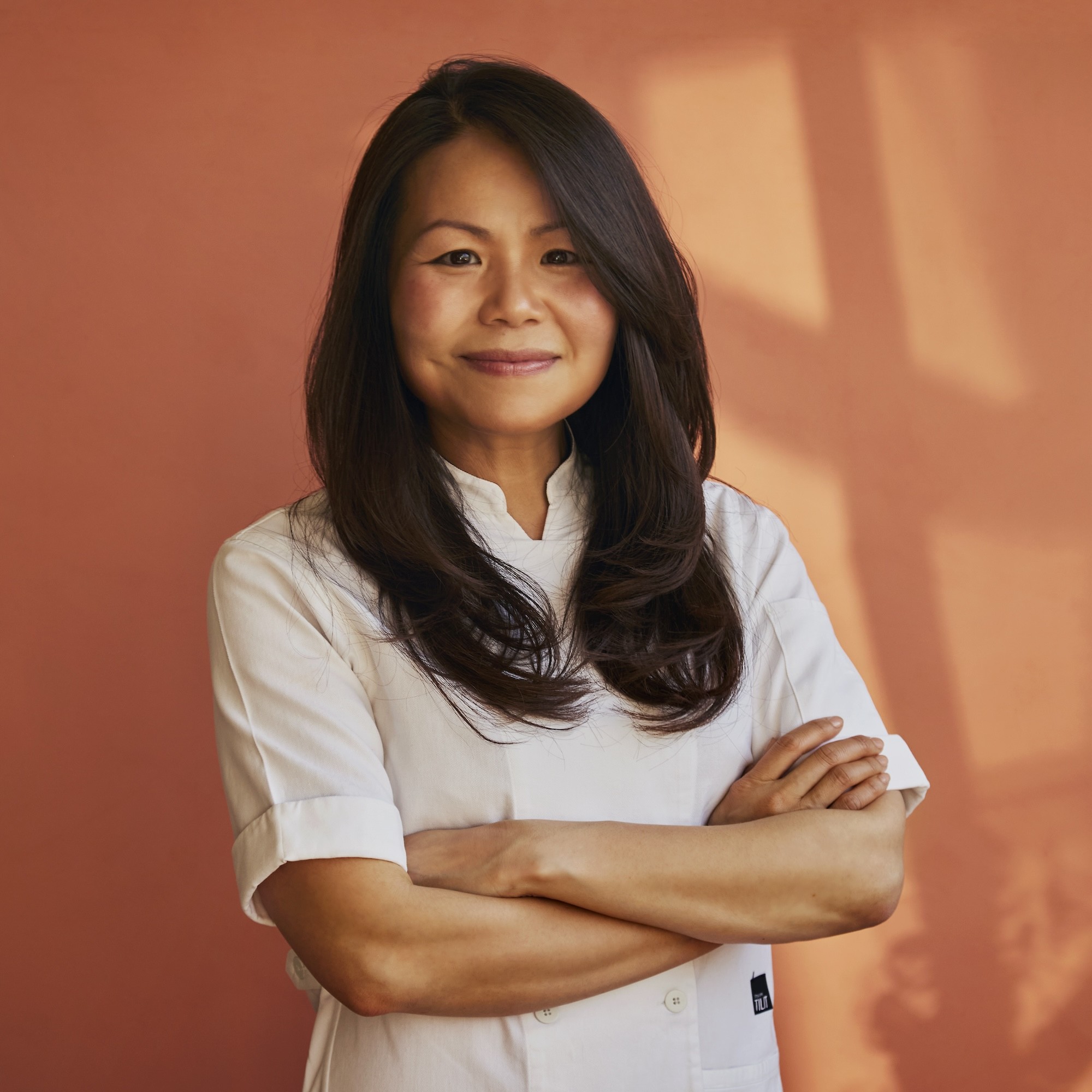
British Vietnamese chef and cookbook writer, Thuy, is former Head Chef of London’s first organic Vietnamese restaurant ‘Little Viet Kitchen’. She has two bestselling cookbooks and is an authority on Vietnamese cuisine.
2. Get the Layout Right
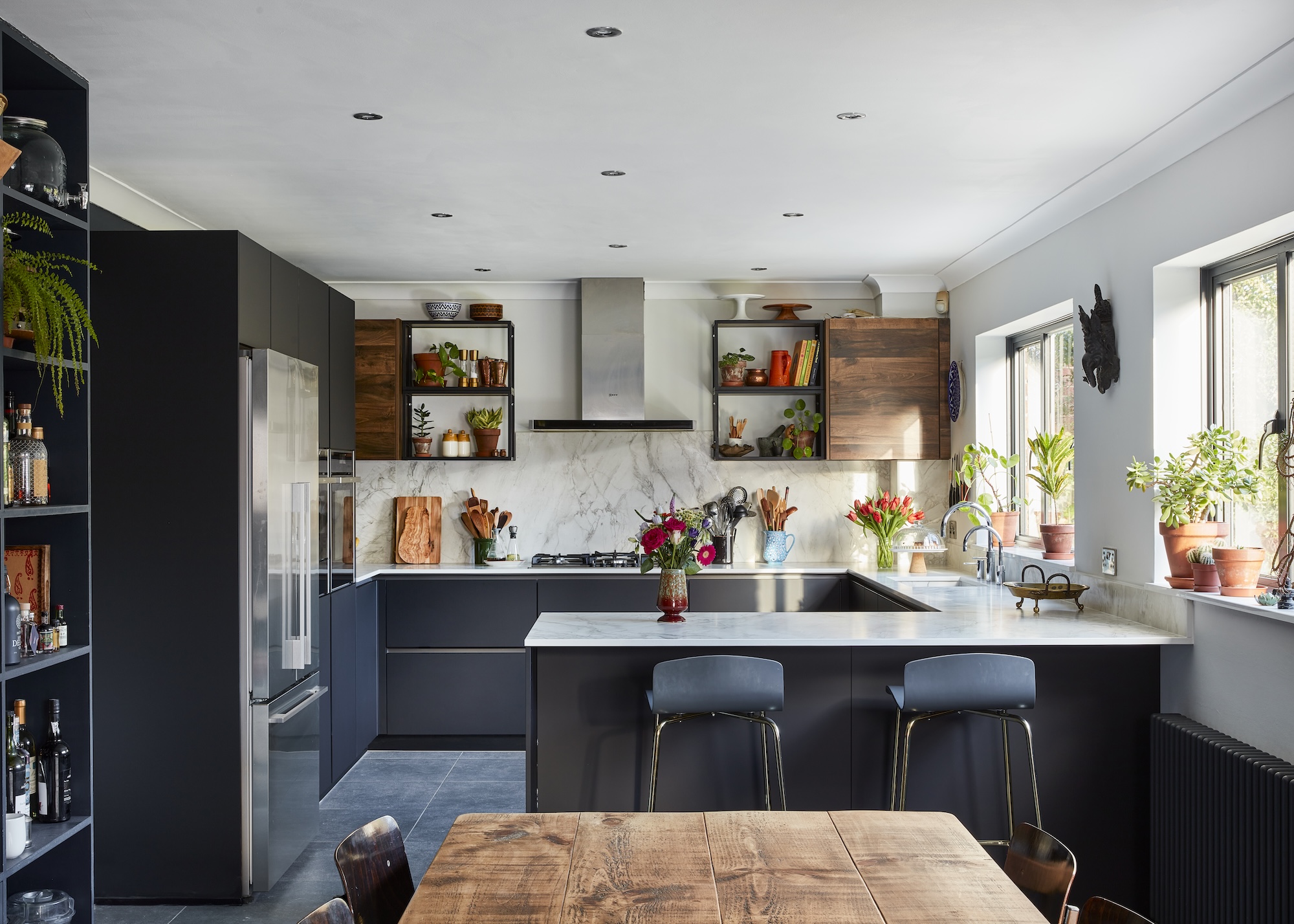
Professional chefs love a galley kitchen layout, and for good reason. These super-efficient cook spaces are often long and narrow, with two rows of base units and wall cupboards facing each other and a walkway between. The result is an efficient kitchen with easy access between countertops, storage, and appliances.
“A galley layout works wonders in small spaces, keeping all your work zones close together so you don’t waste time moving around,” agrees Dean Harper, chef at Harper Fine Dining.
But that’s not the only option, say the pro chefs. In her own kitchen, former Great British Bake Off contestant Chetna Makan (now a cookbook author and food personality) chose a U-shaped kitchen layout. “It’s a smart layout which creates plenty of prep space, while keeping everything within easy reach,” says Chetna.
3. Go for Bespoke Kitchen Storage
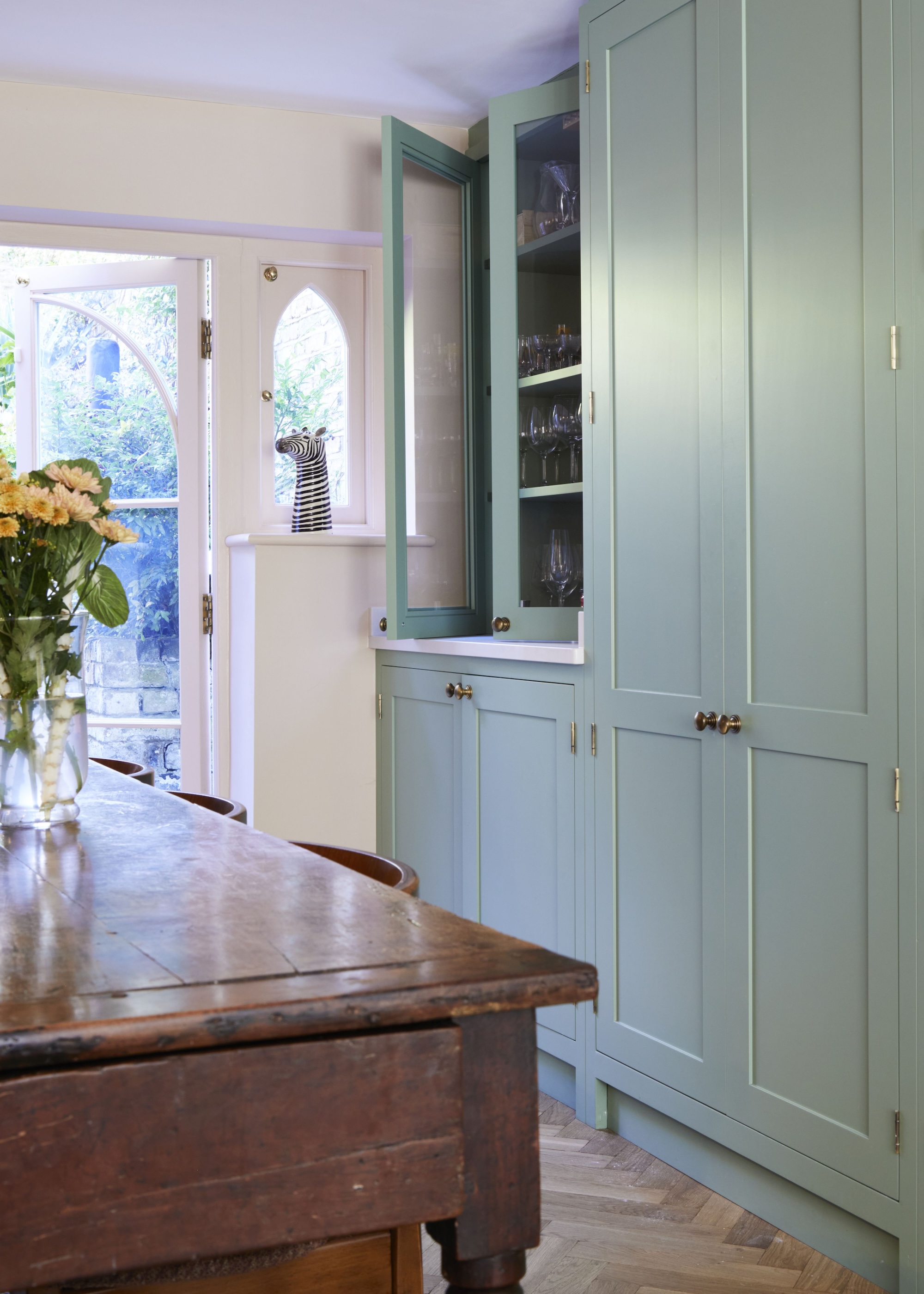
Chef’s kitchens have everything within arm’s reach but still stay neat and organised. And that’s down to well-thought-out kitchen storage, say the experts.
“Chefs need instant access to their tools and ingredients, which is why we favour deep drawers, open shelving, and clearly organized dry goods,” says Charlie Smallbone, founder of Ledbury Studio. “But it goes beyond that, we design cabinetry tailored to how each client actually cooks. From pan drawers sized to fit specific cookware, to built-in compartments for knives, spices, or even baking trays. It’s about creating a kitchen that works for you.”
As a professional, busy baker and TV presenter, Juliet Sear wanted easy access deep pan drawers for her range of baking tins, pans, and bowls. “We also included tall, floor-to-ceiling cupboards to house larger appliances and cookware, and glass-fronted cabinetry to showcase her finer glassware and more delicate china,” says Nicolle Whyte, design director at Olive & Barr.
For Neil Paterson, co-founder of private cheffing service Arete, good organisation is essential: “From working in professional kitchens, I’ve learned that good organisation makes all the difference. In my kitchen, I use clear, labelled containers with dates to keep ingredients fresh and easy to find, which helps me stay on top of prep and reduce waste.”
“I like slim bins and different compartments for waste, and storage cupboards built into the island for big equipment like mixers and toasters,” adds Michelin-starred chef Shaun Rankin. “And of course, the nice big larder cupboard provides even more storage. This means my kitchen is quite minimalistic — I don’t like a cluttered kitchen.”
4. Choose High-Spec Equipment and Put It In the Right Place
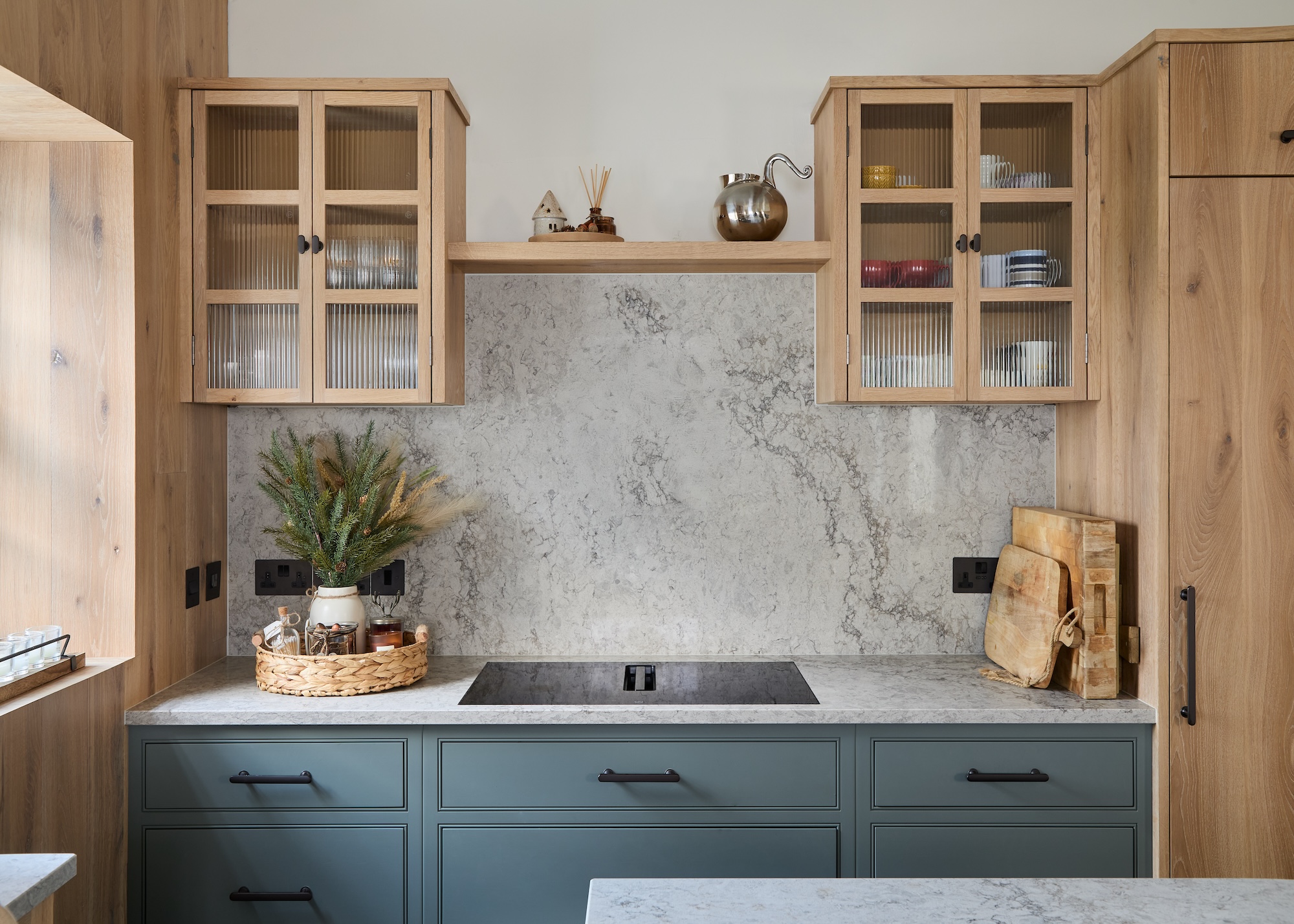
The professionals insist on state-of-the-art kitchen appliance trends and gadgets to cook their gastronomic delights to perfection. But it’s also about choosing appliances that work with your cooking style, and crucially putting them in the right place in your kitchen.
For chef Shaun Rankin, that meant significant changes when it came to designing his own bespoke farmhouse kitchen.
“For a kitchen space to flow well (both at home and in a professional setting), it’s about putting the right equipment in the right places,” says Shaun. “It’s all about making cooking simple at home, without too much fuss. You want the workspaces to feel right so that you’re not running around in circles!
“The original kitchen was someone else’s design; it was how they wanted to cook, but none of it worked for me. It was set up with an AGA system, and I don’t cook that way, so we needed to start again.”
Instead, Shaun chose a dedicated oven wall with two intelligent built-in ovens and a state-of-the-art induction hob surrounded by ample storage and prep areas for effortless movement while cooking. Then there’s a wet zone with a kitchen sink station (strategically positioned to keep surfaces uncluttered) and a black mirror-glass wine fridge in the seating area.
“The kitchen meets the professional chef’s requirements in terms of equipment while remaining welcoming and homely,” he adds.
It’s also the little things that are used in professional kitchens that make a big difference to home kitchens, say the chefs.
“Squeezy bottles are great, so are rubber spatulas of various sizes, temperature probes, and tongs,” adds Jack Godik, executive chef of Sucre. “Stainless steel pans are great to have at home. Once you’re used to them, they’re very versatile and last forever. They also look nice.” A good blender is also essential, says Jack, and an air fryer: “It’s much more similar to the powerful ovens we have in restaurants than a conventional home gas/fan oven.”
Shaun is a Michelin-starred chef, in charge of his own restaurant in Grantley Hall hotel and spa. He also owns The Blue Lion restaurant in the Yorkshire Dales, situated a short distance from his home in East Witton.
5. Consider a Kitchen Island
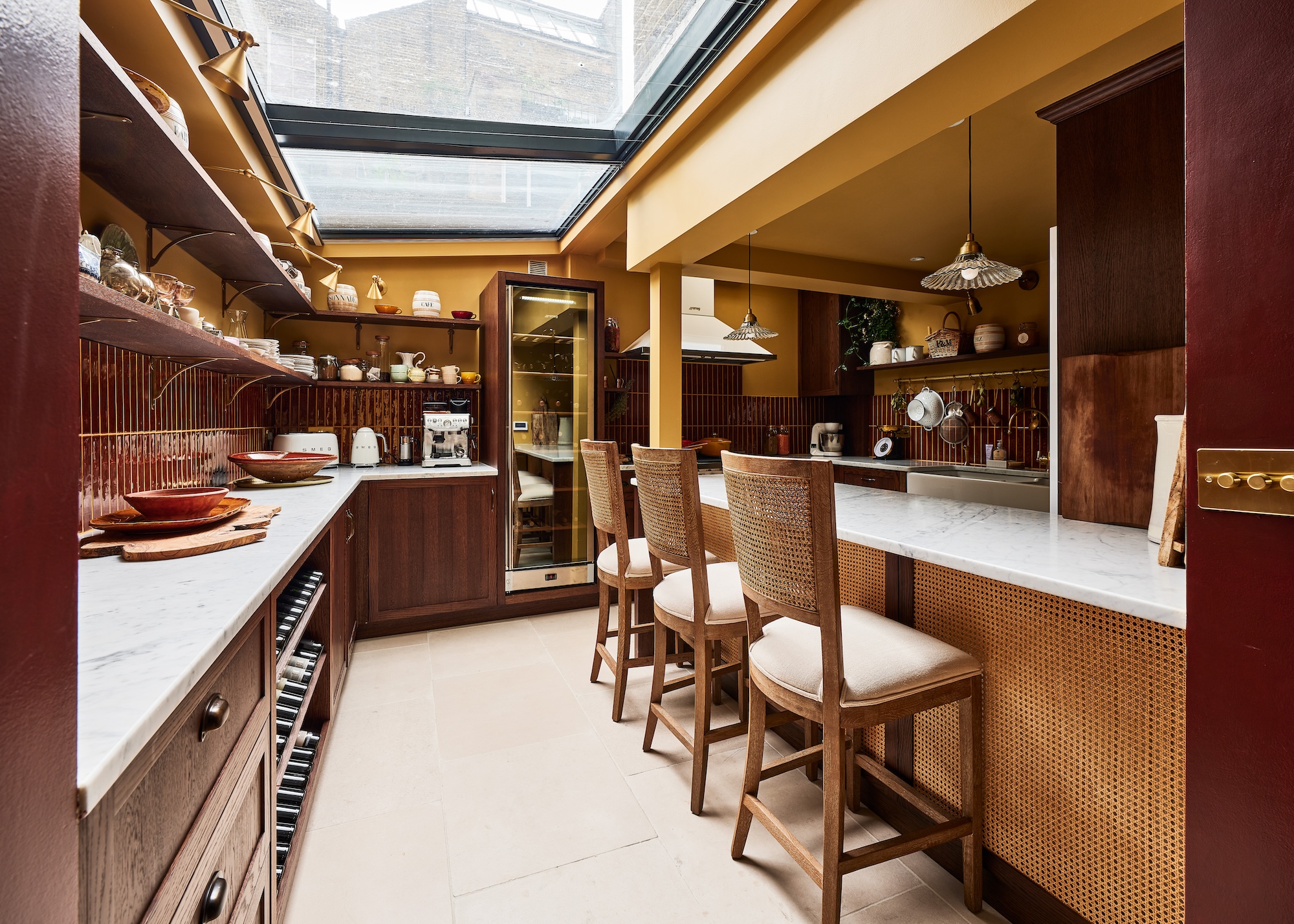
We all love our kitchen island trends — and the same goes for the gastro hotshots. In her London townhouse, chef, TV presenter, and cookbook author Clodagh McKenna insisted on a central island unit for her culinary centerpiece.
“The one thing that I knew I wanted was an island where friends and family could sit while I cooked, so that was the starting point,” explains Clodagh. “I imagined the island in situ, and I would stand there as if I were going to cook and work out what was the most efficient for me.”
A double-door Smeg fridge is located right beside the island so Clodagh can reach for ingredients without moving, with pull-out rubbish bins underneath the island. “A double Butler sink is behind me and the cooker is close, so I can keep an eye on what’s cooking while I prep at the island,” she adds.
Chef Thuy couldn’t agree more: “The kitchen is the heart of our home and the island is my version of a chef’s table for good food and even better conversation.”
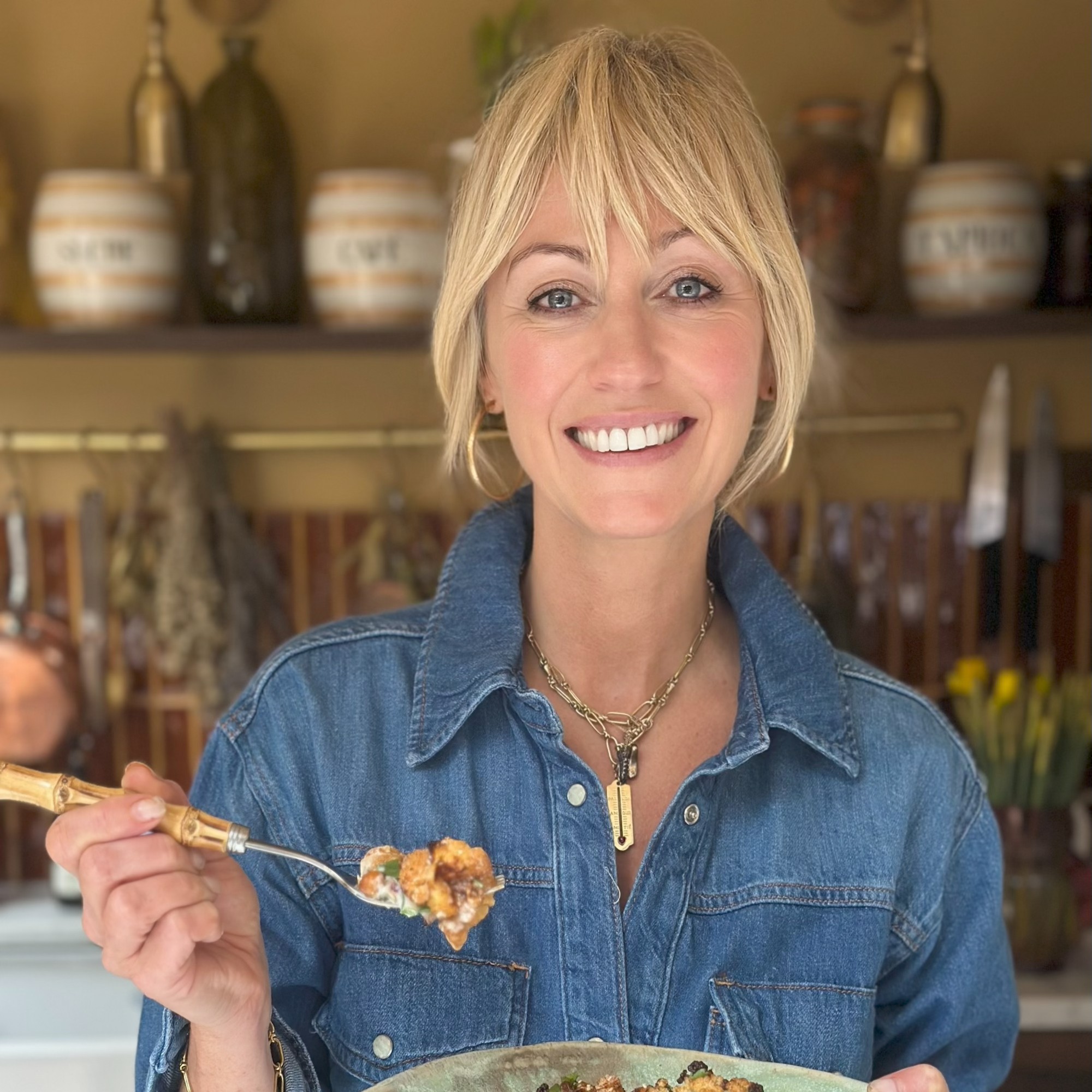
Clodagh is a resident chef on ITV’s This Morning show and author of nine cookbooks including a bestseller in the UK and Ireland. She lives and works between London and Broadspear, a 100-acre sustainable farm in Hampshire.
6. Choose Tough, Yet Beautiful Worktops
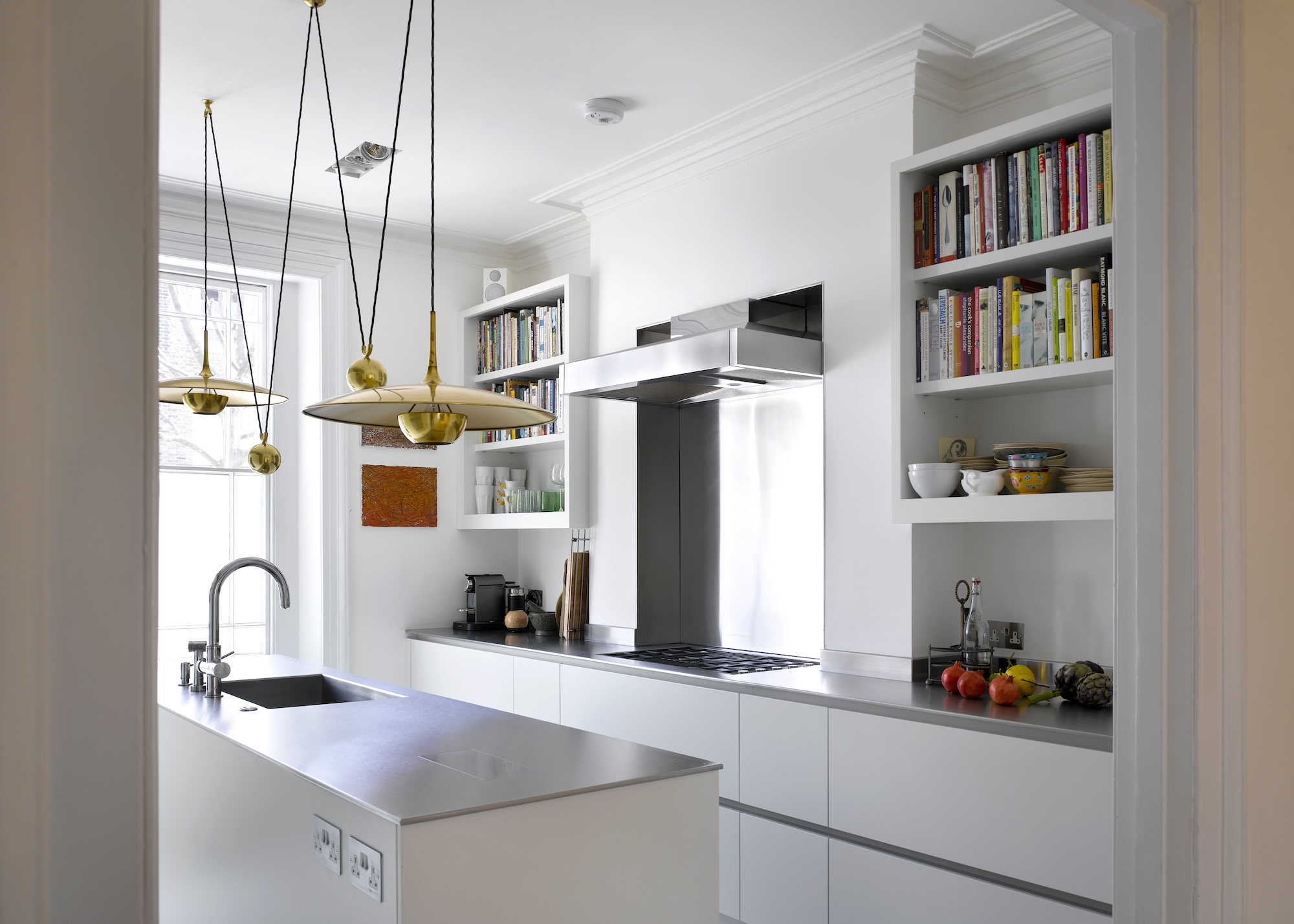
Kitchen worktops take a battering in a busy restaurant kitchen. So take your cue from the chefs and choose stainless steel worktops, which have long been the pro’s material of choice when it comes to surfaces.
“Stainless steel worktops are incredibly durable, easy to clean, and hygienic, which makes prepping food much more efficient,” explains Dean of Harper Fine Dining. “Plus, they don’t stain or absorb smells, so your kitchen stays fresh.”
In the bespoke kitchen of chef Yotam Ottolenghi, slick, stainless steel worktops were a key ingredient. “Opt for man-made surfaces such as quartz, sintered stone or industrial-style stainless steel like those used in Ottolenghi’s own kitchen,” explains Allison Lynch, senior design consultant at Roundhouse. “These materials are not only hygienic and easy to clean, but durable enough to handle the daily rhythm of cooking. It eliminates the stress of staining, and hot pans can go directly on them too.”
Other surfaces get big ticks too. Chef Adam Handling MBE specified high-performance Dekton for his restaurant Frog, based in Covent Garden. “I need work surfaces that don’t limit but encourage culinary creativity,” says Adam. “Dekton can handle radical temperature changes with ease. From minus 188 degrees liquid nitrogen through to red hot pans, there is no damage. Dekton is also resistant to stains and scratches, which is crucial when handling unruly ingredients or tools.”
7. Balance Performance With Personality
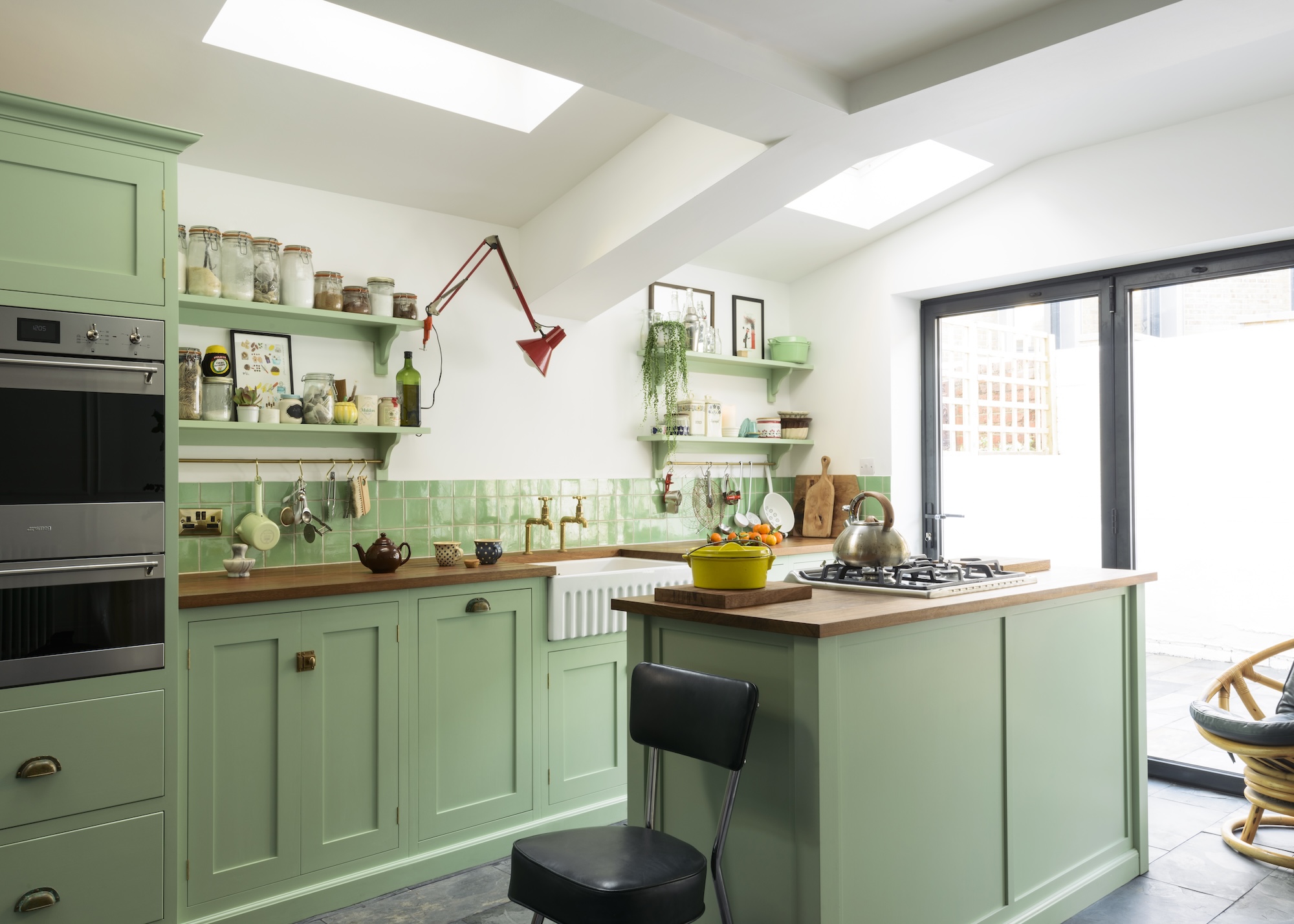
All the top chefs agree that their home kitchens need to marry performance with personal style. These are spaces for everyone to enjoy, not just a workhorse for whipping up gastronomic feasts. For that reason, kitchen color, material, and texture are all high on the agenda for a pro-style kitchen that effortlessly feels good as well as functional.
“Once I had all the practical things in place, I could have fun with everything around it,” says Clodagh. “I knew that I wanted warm colours that would transport me to Italy/France in the midst of London — the caramel kitchen tiles and mustard paint do exactly that.”
In Shaun Rankin’s farmhouse kitchen, pale oak cabinetry instills a warm Scandi cottage vibe while top baker Juliet Sear wanted her kitchen to be TV-worthy but also reflect her personal style. “She chose a charming color scheme of green and blush pink, beautifully complemented by brass hardware and characterful antiques,” says Nicolle of Olive & Barr.
Cook, food writer, and presenter Rachel Khoo chose a gorgeous Pea Green shade for her Devol kitchen. The fresh green kitchen and eclectic mood are spot on for filming but also for creating a friendly and welcoming kitchen that’s individual and a joy to spend time in.
8. Prioritize Open Shelving

It might seem like a minor detail, but kitchen shelf ideas are quite essential, and chefs love open shelving and racks — and it’s a great takeaway for your kitchen.
“I cannot stress the importance of good shelving,” declares Eran Tibi, founder and executive chef of Kapara and Bala Baya. “I love the tubular metal bar shelves that allow you to hang things off hooks. When you are cooking, it’s great to be able to reach up and grab what you need off shelves or hooks without having to open cupboards.”
“I love open shelving where I can store both practical products and ingredients and treasures from my years travelling,” agrees Clodagh. “And I always add a brass bar to every kitchen, again both practical for hanging my everyday utensils like graters and scissors but also for drying herbs.”
9. Focus on Brilliant Lighting

Kitchen lighting is another crucial factor for the professional chef’s cook space, and the same goes for every kitchen.
“A combination of task lighting, ambient lighting, and carefully considered placement can dramatically improve both functionality and atmosphere,” says Charmaine White of HollandGreen. “Task lighting should be focused on prep zones, cooktops, and sinks to support precision work, while softer ambient lighting can create a calm, inviting mood. Avoiding glare and harsh overhead lights will ensure the kitchen feels balanced and easy to spend time in – whether you’re cooking, hosting, or simply enjoying a quiet coffee.”
FAQs
What Is the Best Layout for a Chef's Kitchen?
Galley kitchen ideas are a favourite layout for the professional chef. These efficient cook spaces are often long and narrow, comprising two rows of units facing each other with a corridor or walkway between.
The name comes from the galley kitchen of a ship, where space is tight and an organized workspace is vital. Hence, double galley layouts offer quick and ergonomic access between worktops, appliances, and storage when rustling up a feast. Galley kitchens are spot on for compact spaces, but are also a great way to organise a larger kitchen by introducing an island to form one half of the galley.
Professional chefs know a thing or two about kitchens. So when it comes to designing your kitchen for cooking, seek expert guidance from an experienced kitchen designer.
Kitchen experts can work out how best to use your space, what sort of cooking appliances you need, and how to organize your kitchen for the ultimate storage hub.
